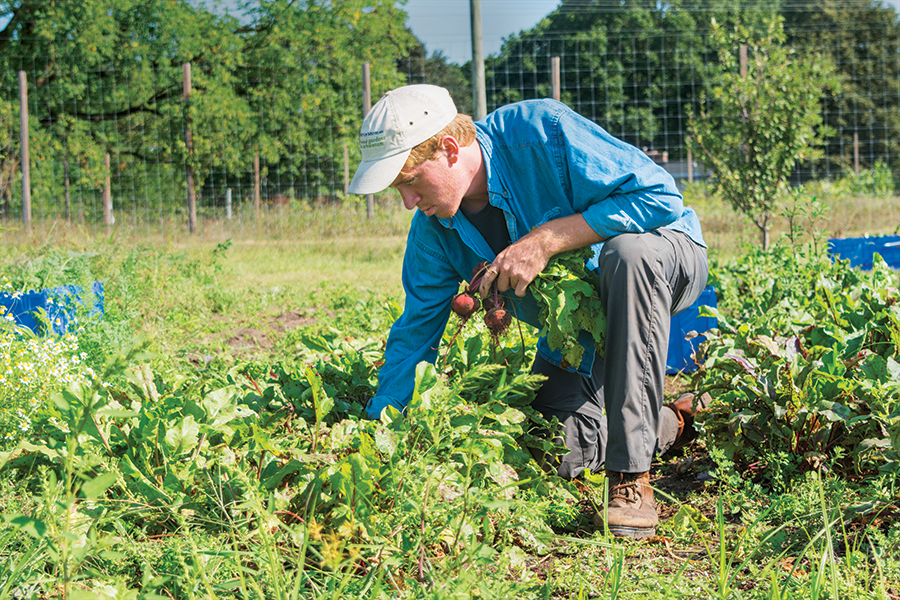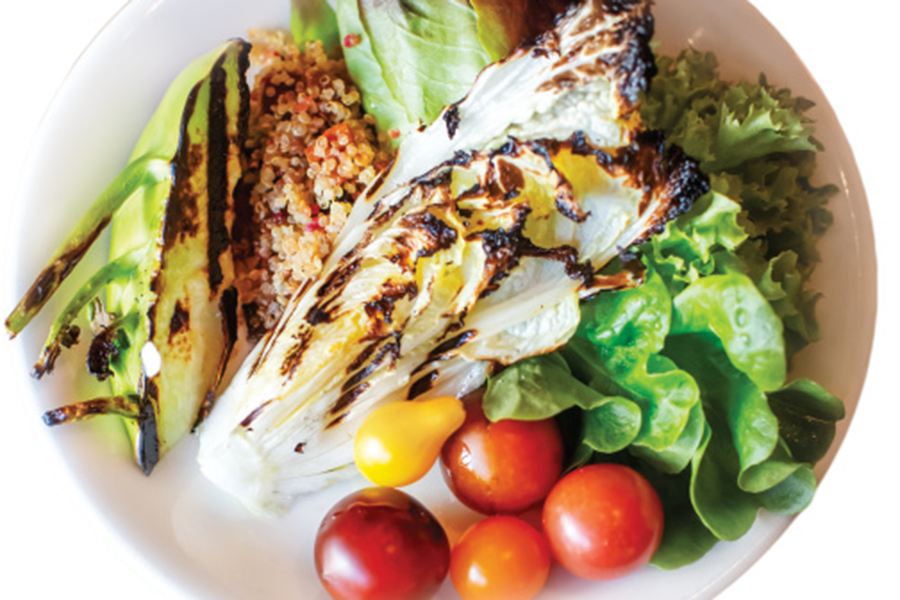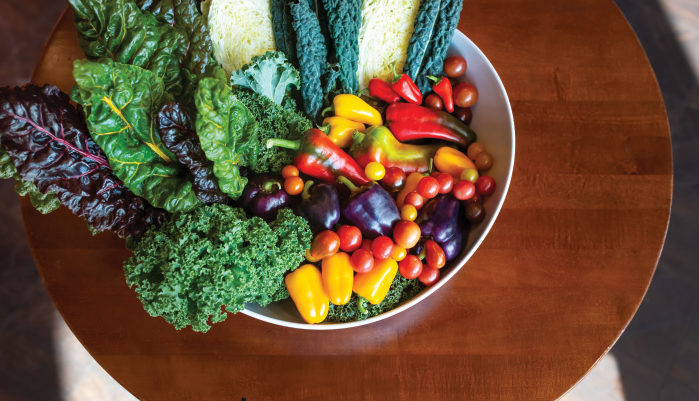Home > Michigan > Michigan Farm to Table > University of Michigan Is Adding More Local Food to the Dining Hall Menu
University of Michigan Is Adding More Local Food to the Dining Hall Menu
In partnership with: Michigan Department of Agriculture & Rural Development

The dining services program at the University of Michigan is aiming to put more Michigan-grown food on lunch trays.
Michigan Dining calculates that around 80% of its “food spend” is with Michigan companies, including farmers, manufacturers and suppliers, says Steve Mangan, senior director of Michigan Dining.
“The work we do is moving into this idea of providing healthy and nutritious foods, thinking about wellness, such as how students can prepare themselves for academic success through their diet and exercise, and teaching sustainability,” says Mangan, whose division serves 27,000 meals daily in its residential dining halls alone. “We are really bringing lifelong skill sets to these students who work with us and dine with us every day.”
See more: Michigan Nursery Industry is Going Green

Farm-to-Institution Efforts Expand
Collectively, institutions carry the power to touch every age demographic across Michigan, from early childhood centers, K-12 schools and universities, to even hospitals and senior care facilities, says Colleen Matts, farm-to-institution specialist at the Michigan State University Center for Regional Food Systems. This gives institutions the power to instill locally grown and healthy food preferences among dining hall patrons, as well as impact the environment and the economy.
A 2017 report shows that of 65 institutions participating in the Cultivate Michigan campaign of the Michigan Farm to Institution Network, 14 recorded spending more than $4 million on Michigan foods in the previous three years. That’s just a small part of the picture.

“From what we are hearing and seeing, local food is a way for institutions to invest in the local economy and support Michigan farms and businesses,” Matts says. “Local food purchasing efforts are also a part of their broader sustainability efforts on campus. Good food – and that includes local food – can be a recruitment tool.”
See more: Why Michigan is a Great Place for First-Time Farmers
In that spirit, the Cultivate Michigan campaign provides support for sourcing local food and gives institutions promotional materials on specific Michigan produce, from the state’s top crops of apples and asparagus to locally sourced broccoli and garlic. Meanwhile, the program fosters regional food relationships through networking and educational events, farmer workshops and farm tours for institutional food service professionals.
In 2019, the program surveyed Michigan’s 15 publicly funded universities to learn their needs and goals to attain higher local food purchases. Matts says that when large institutions like universities make buying local a priority, they have an enormous ability to impact the supply chain, making these foods more readily available to other institutions.

Suppliers Seek Local Produce
University of Michigan Dining works with food suppliers like Detroit-based LaGrasso Bros. Produce to secure Michigan-grown food. The family-owned produce distribution company purchases direct from Michigan farms, such as Ruhlig Farms & Gardens of Carlton; Van Dyk Farms of Imlay City; Mike Pirrone Produce of Capac; and Leitz Farms of Sodus, according to Tom LaGrasso III, chief operating officer.
“The trend is to source more locally, and I think sustainably, that’s a good thing,” LaGrasso says. “I think buying local will continue as a trend because it helps support the economy, helps reduce the miles the food has to travel and, from a price-point perspective, it is extremely attractive to eliminate transportation costs.”

The transportation costs are particularly low for certain food purchases made by the University of Michigan, which come from its very own backyard.
Michigan Dining buys a variety of produce from the campus gardens during the growing season and in the winter from university hoop houses, which extend the season for kale, various lettuces, peppers, cucumbers and tomatoes. Likewise, farm-to-freezer efforts make foods like Michigan blueberries available in January.



